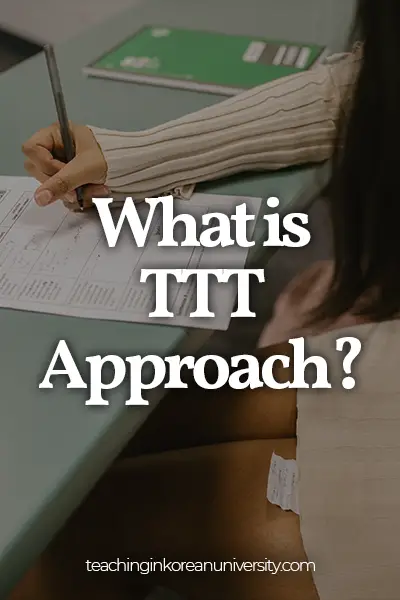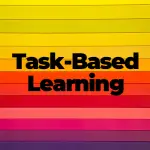In the interest of professional development, I wanted to try out something new in my English classes with university students in South Korea. I was at a Kotesol (English teacher’s professional development organization) presentation, and the person was talking about the test teach test approach.
Interesting, I thought to myself. Would this work in my classes? It seemed to lend itself quite well to those grammar points or vocabulary sets that students have probably seen before but maybe didn’t have locked down that well. I tried out the Test Teach Test approach in my classes and liked it a lot.
It’s certainly an excellent way to help students activate prior knowledge. Keep on reading to find out more about it.

Teaching English: Test Teach Test
Test Teach Test Approach-Not my Usual Style
The test-teach-test (TTT) approach is not my usual style of teaching, and most days, I lean more towards PPP (presentation/practice/production) or task-based teaching.
However, for something like relative clauses, the affirmative simple past, or vocabulary that students have studied before, the test teaches test approach could work very well. Why teach things that students know already? It’s boring and just not that interesting.
Recently, I decided to give it a try with “Be” in the past and other regular/irregular past tense verbs since my university students in Korea should already have a decent grasp of the basics since they’ve been studying English for around 10 years. The unit in my book that I was covering was 4 Corners 2, Unit 9 by .
The “Test”
Let’s look at the first Test of the Test Teach Test approach. Here is the “test” that I prepared, with some vocabulary/names of people thrown in from the previous unit: The Past Tense Test. In addition, I pointed out the pages in the book that they could refer to if necessary.
I emphasized to students that it was just a test of their prior knowledge and not a test that I would grade.
The “Teach”
I gave the students about 10 minutes to work on it, and then we checked the answers together. I went quickly over the easy ones but spent more time pointing out the finer details of the trickier stuff (example: negatives/questions actually use the present tense verb).
Because I did this, I didn’t do a more formal presentation of this grammar point in class.
The “Test,” take 2
Then, for the final “test” phase of the TTT approach, I made a Past Tense Board Game, which the students played in small groups (again recycling vocab from Unit 8 in the book). I walked around the class checking for accuracy and provided some feedback if necessary.
I listed any common errors and pointed them out at the end of the activity.

What is TTT Approach?
Results of the Test Teach Test Approach
Overall: it went well! ALL the students in my ESL class, even the ones who don’t actively participate in class, seemed to enjoy the board game.
Most students put in a good effort on the test and were referring to the relevant pages in their books, etc. Success! I’ll definitely be doing it again for easy things that the students probably already know but just need a bit of review on.
I loved how the Test-Teach-Test approach kind of puts the ball into the student’s court. Like they’re responsible for figuring out what they don’t know and then learning it.
Check out Jeremy Harmer’s The Practice of English Language Teaching if you want to bone up on the various types of teaching methodologies and approaches.
Learn More about the Test Teach Test Approach to Teaching English
If you want to know more about this English teaching approach, then you’ll need to check out this short video below for all the details:
FAQ About Test Teach Test Approach
Check out the most frequently asked questions about the TTT approach and the answers to the questions.
What is TTT?
TTT or Test Teah Test approach is a way of teaching students by giving a diagnostic test at the beginning of the class; giving a lesson based on the students’ needs. Lastly, students are given a task or test to practice the lesson material. The Test Teach Test approach can be effective when teaching grammar or vocabulary to ESL students.
What are the different approaches in teaching?
Two different approaches in teaching are TTT, PPP, and TBL. TTT stands for Test Teach Test approach; PPP stands for Presentation Practice Production approach. TBL stands for Tasked-Based Learning.
What is the advantage of TTT over PPP?
Using the Test Teach Test approach gives teachers a better idea of what the students’ needs are. By testing the students first, teachers can identify the areas students can improve. PPP is often explained as a way of following the course books. However, PPP is criticized by some teachers that it is too formal, structured, and doesn’t focus on student interaction. Still, there is no single best approach. You can choose the best approach depending on what your lesson focuses on.

Test Teach Test
Test Teach Test Approach: Join the Conversation
Have you ever tried this English teaching approach in your classes? How did it go? Leave a comment below and let us know your thoughts. Or, you have another go-to activity or game for introducing concepts that students may have seen before. Also, check out other approaches and methods in language teaching.




